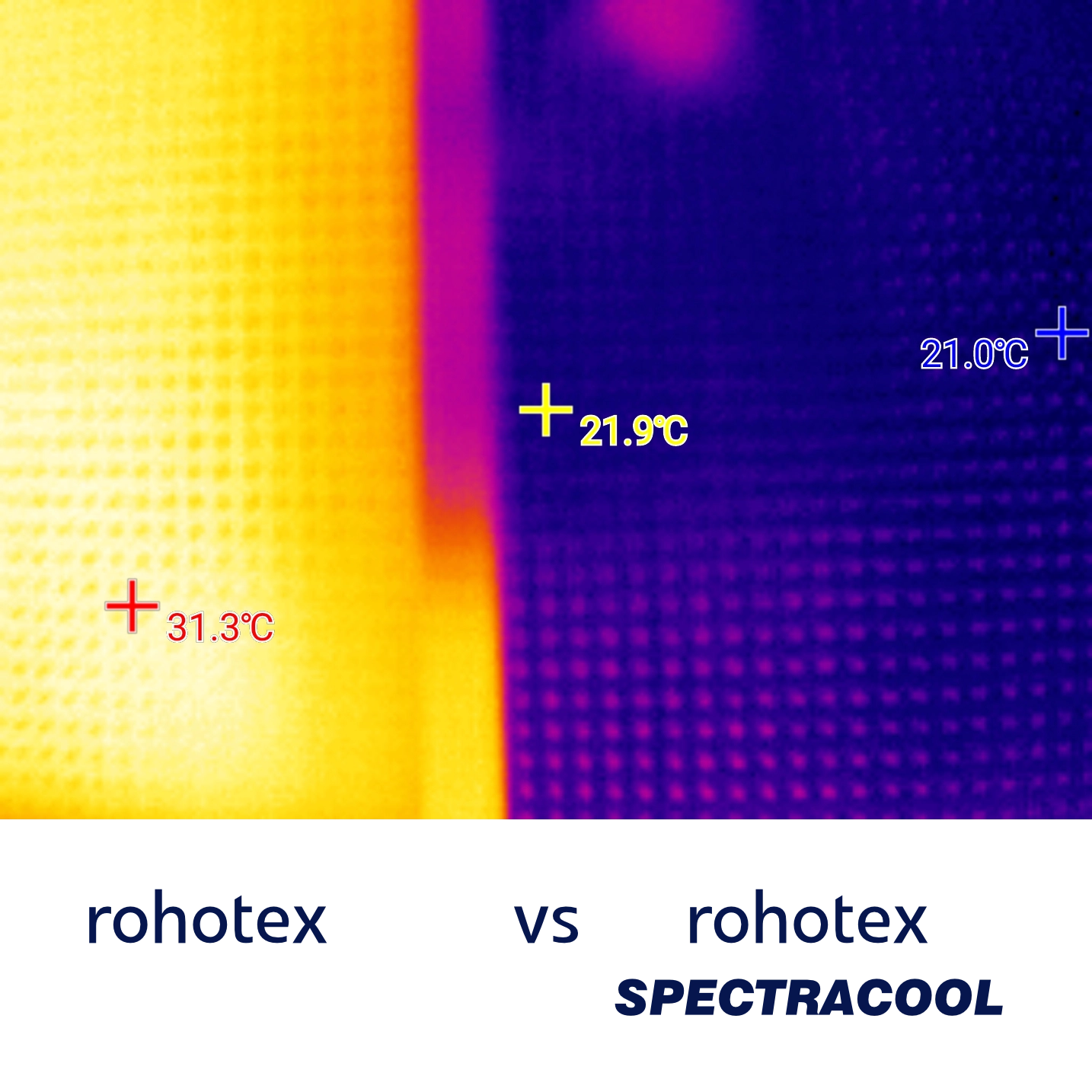Passive cooling of buildings with textile facades without energy consumption.

The International Energy Agency estimates that cooling systems account for 15% of global electricity consumption and 10% of greenhouse gas emissions. The need for building air conditioning will continue to increase. The need for cooling has tripled worldwide since 1990.
According to the IEA (International Energy Agency), air conditioning in buildings will account for the majority of total energy demand in 2050, at 37%.
Simply switching to renewable energies such as wind and solar will not be enough to meet energy needs. As more people switch to electricity as their primary source of energy, the more we can reduce consumption, the easier and more stable this transition will be.
Passive cooling methods for buildings will be crucial. Textile facades are a key technology for energy-free building air conditioning, especially in warm regions.
A textile facade is a complete and permanent cov
ering of a building with a technical fabric. It is also called a climate envelope or bioclimatic facade. The functional principle is as simple as it is ingenious and allows the building to be air-conditioned without using any energy. The entire system is practically maintenance-free. Creates a natural and healthy indoor climate. The fabrics are transparent, meaning they can be installed over windows without significantly affecting the view.
This innovative textile facade technology plans to change the game in the world of architecture and help save the climate. Under the name rohotex-Spectracool, the company has developed a textile facade fabric that can neutralize the infrared rays that are responsible for unpleasant heat.
The efficiency of this cooling effect depends on various factors, including the angle of incidence of the sun, the height of the facade and the distance of the fabric from the building wall. In extensive tests, roho was able to demonstrate an average cooling performance of an astonishing -20 degrees Celsius compared to conventional fabrics. This is done without the use of external energy sources such as electricity, gas or air conditioning, but exclusively through this special high-tech fabric.

The special thing about this technology is that it automatically adapts to the ambient temperature. When there is intense sunlight, a high cooling performance is achieved, while when there is little sunlight the cooling is reduced.
A key focus in the development of this technology was the use of non-toxic substances. In contrast to
conventional coolants in heat pumps or air conditioning systems, cooling occurs without the use of harmful chemicals.
Previously, textile facades had a similar effect to the shade of trees, which was often not enough, especially in hot regions and on the south side of buildings. The introduction of this special high-tech fabric promises a revolution in architecture as it can avoid urban heat islands and significantly improve the quality of life in cities.
Industrial production of this groundbreaking fabric has already begun, and the first projects to integrate these textile facades are in the planning phase.
The company CH Pro, S.A. has taken over the distribution rights for America.